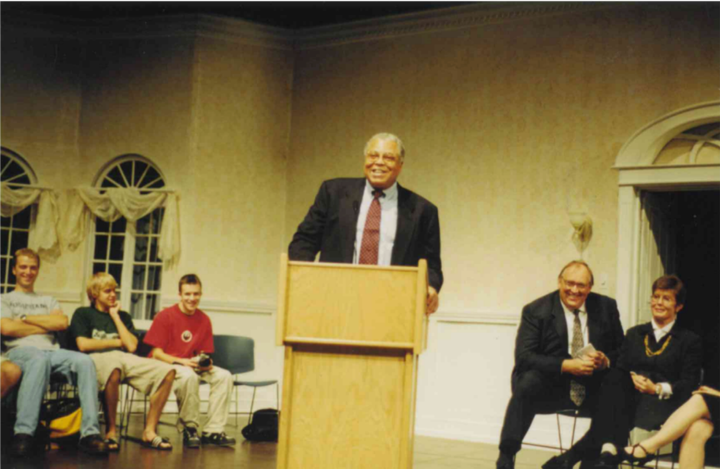Thor: Ragnarok takes a twist on the franchise
STEPHANIE SANCHEZ
sasanchez15@ole.augie.edu
After two blockbuster solo movies, two Avengers’ films and one in postproduction, Thor has been exploited by Marvel studios for six years and counting.
Thor: Ragnarok, the franchise’s third film, is ruling the box office worldwide with $650 million in revenue, already eclipsing the total income for Thor and Thor: The Dark World.
The film’s success is in no way undeserved. Ragnarok follows the same comedic vibe that characterized Guardians of the Galaxy. It appears to be that an action comedy is the standard for Marvel movies and, although it might get tiring in the films to come, this dynamic works for Ragnarok.
Ragnarok begins with a quick nod to The Dark World’s events, in which Loki exiled Odin and took his place by disguising himself as the King of Gods. Thor (Chris Hemsworth), having escaped from confinement, returns to Asgard to find everything he knew changing.
Hemsworth’s Thor is a Marvel staple by now, and his character’s hilarity finally finds a place to develop in Ragnarok, with him realizing his power goes past his hammer and coming to terms with the nature of his home.
As opposed to the first Thor instalment, Ragnarok aligns Thor and Loki (Tom Hiddleston) as a team to fight against Asgard’s doom: their sister Hela (Cate Blanchett). Although the film changed Hela’s comic background from Loki’s daughter to the lawful heir of Asgard as Odin’s firstborn, the story benefitted from the switch instead of inspiring disdain among purist comic fans.
Blanchett presents the only sombre character in the film, a role that fits Hela’s status as the Goddess of Death. Her portrayal of a bloodthirsty warrior helps the film balance the comedic efforts nascent from Thor’s journey of discovery, the Grandmaster’s (Jeff Goldblum) quirky antics and the Hulk’s (Mark Ruffalo) digs at Thor.
Marvel movies have become known for their constant superhero cameos and infinite references to previous films, and Ragnarok is no exception to the rule. Counting with the appearances of Doctor Strange (Benedict Cumberbatch), a flashing image of Black Widow (Scarlett Johansson) and a few remarks about Tony Stark, Ragnarok serves exactly what has made the Marvel universe so popular: a cohesive storyline that goes way beyond a single film and makes audiences feel like connoisseurs when they get a reference. Maybe DC Comics and the Warner Bros. could learn a little from that.
Ragnarok’s secondary characters are just as important to the film’s success as the leads, something uncommon in superhero movies where the focus is the hero alone and, in some cases, the people to be saved. This film, however, made the effort of developing multidimensional personas that are as good, if not better, as the main roles. Korg, voiced by Taika Waititi, is a rock-made gladiator with a soft-spoken Kiwi accent taken from Planet Hulk. Korg steals the show from his first appearance on screen, when he talks about his failed attempts at inciting revolutions because he forgot to print enough pamphlets, and maintains his legend status as the movie progresses.
Ragnarok’s appeal to critics and masses alike is not entirely surprising. A charismatic and talented cast, humour that goes from family-friendly sibling fights to full-blown orgy jokes and Chris Hemsworth’s muscles are the elements for success. By making the characters flawed, comedic and relatable, Marvel got rid of the mysticism that has been a feature in the superhero’s aura.
Although making heroes somewhat rigid worked for Captain America and DC’s Dark Knight, the almost cartoonish nature of the new Marvel films is refreshing and appreciated.



